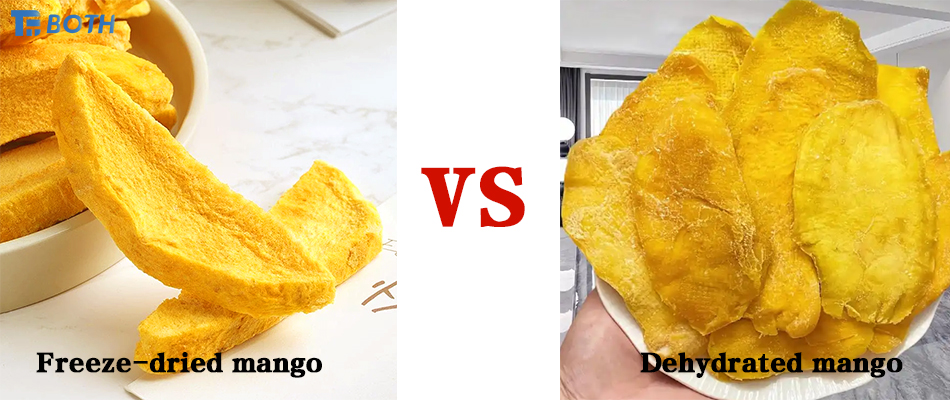With the increasing demand for high product quality and nutrient retention in the food industry, traditional dehydration technologies are gradually showing their limitations, especially when dealing with temperature-sensitive foods. In contrast, freeze-drying technology, with its unique working principle, has gradually become the preferred solution in the food dehydration field. Compared to traditional methods such as hot air drying and vacuum drying, a Freeze Dryer can best preserve the original nutrients, color, and taste of food, while effectively maintaining its shape and structure, meeting the high health and quality standards of modern consumers.

Working Principle:
Food Dehydrator: A food dehydrator removes moisture from food through methods such as heating or ventilation. Common types include hot air drying and vacuum drying. For example, a hot air dehydrator accelerates the evaporation of moisture from the surface of food by circulating heated air, while a vacuum dehydrator lowers the pressure to reduce the boiling point of water, making it easier to evaporate moisture.
Freeze Dryer: The food is first frozen to below freezing point, causing its moisture to form ice crystals. Then, in a vacuum environment, heat is applied to directly sublime the ice crystals into water vapor, thereby dehydrating the food. This process helps preserve the food’s nutrients, color, and taste to the greatest extent possible.
Dehydration Effect:
Food Dehydrator: While a food dehydrator typically removes most of the moisture from food, it can sometimes affect the texture, taste, and nutritional value of the food. For example, hot air drying may cause the food to become hard, and some nutrients may be lost due to high temperatures.
Freeze Dryer: Since the drying process occurs at low temperatures, it helps retain the food’s original shape, texture, nutritional content, and flavor. Freeze-dried foods typically have a porous structure, making them easier to rehydrate.
Suitable Foods:
Food Dehydrator: Food dehydrators are suitable for dehydrating a variety of foods, such as fruits, vegetables, meat, and fish. Common products made using a dehydrator include dried fruits, vegetable chips, and jerky.
Freeze Dryer: Freeze dryers are commonly used for high-quality food products, such as premium health supplements, traditional Chinese medicines, and specialty foods. Examples include freeze-dried fruit slices, coffee, and bird’s nest products.
Equipment Cost and Efficiency:
Food Dehydrator: Food dehydrators are relatively inexpensive, easy to operate, and dry food quickly. However, they may not be suitable for temperature-sensitive foods.
Freeze Dryer: Freeze dryers are more expensive, with more complex operation and maintenance. However, despite the longer drying time, they can produce high-quality dehydrated food, offering advantages in certain specialized fields that are irreplaceable by other methods.
Conclusion:
In conclusion, if cost and efficiency are the primary concerns and food quality requirements are not particularly high, a food dehydrator is a good option. However, if you are looking for high-quality dehydrated food and place a higher emphasis on retaining nutrients and flavor, the "BOTH" Freeze Dryer is the more suitable choice.
Post time: Dec-13-2024






